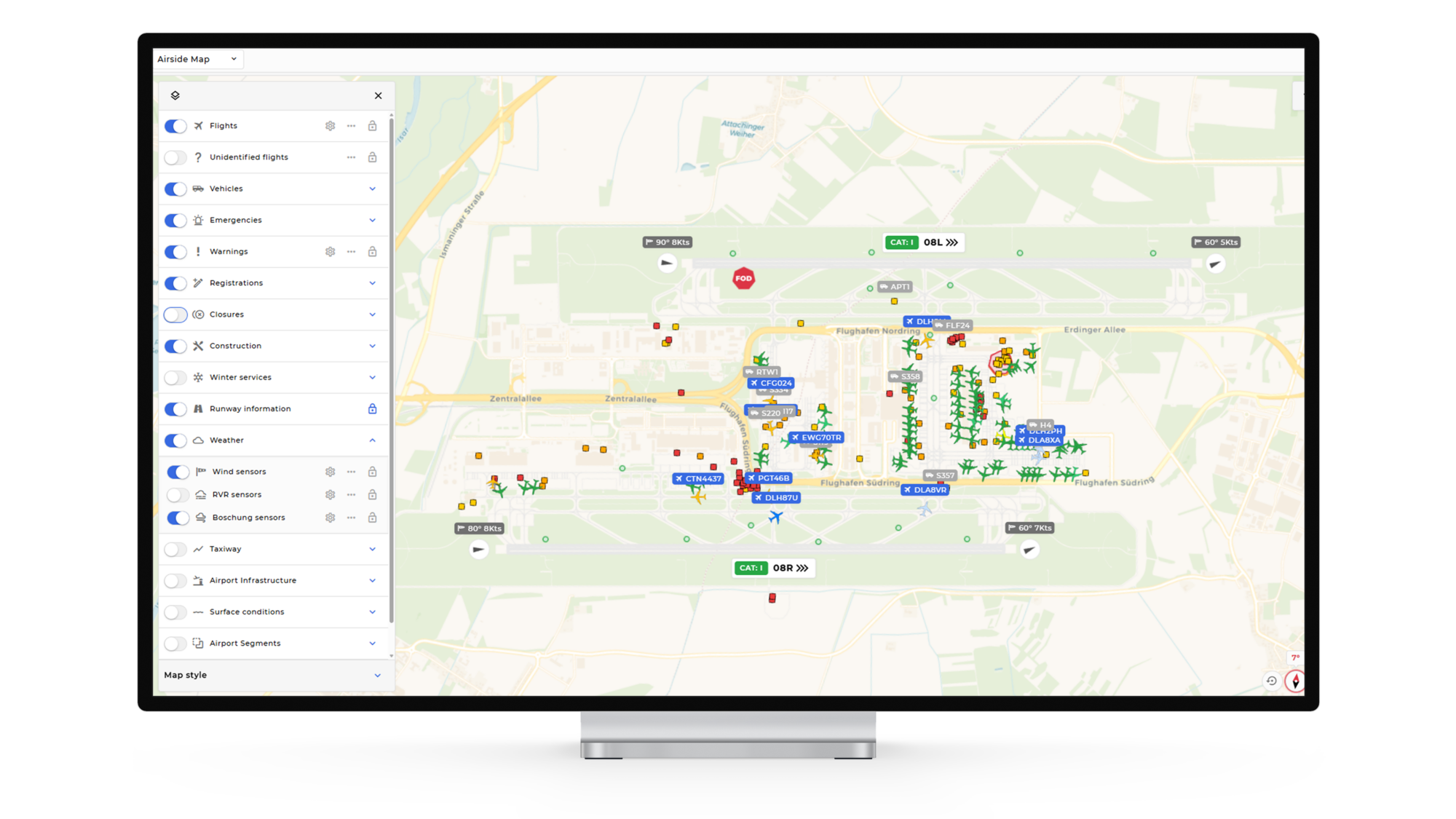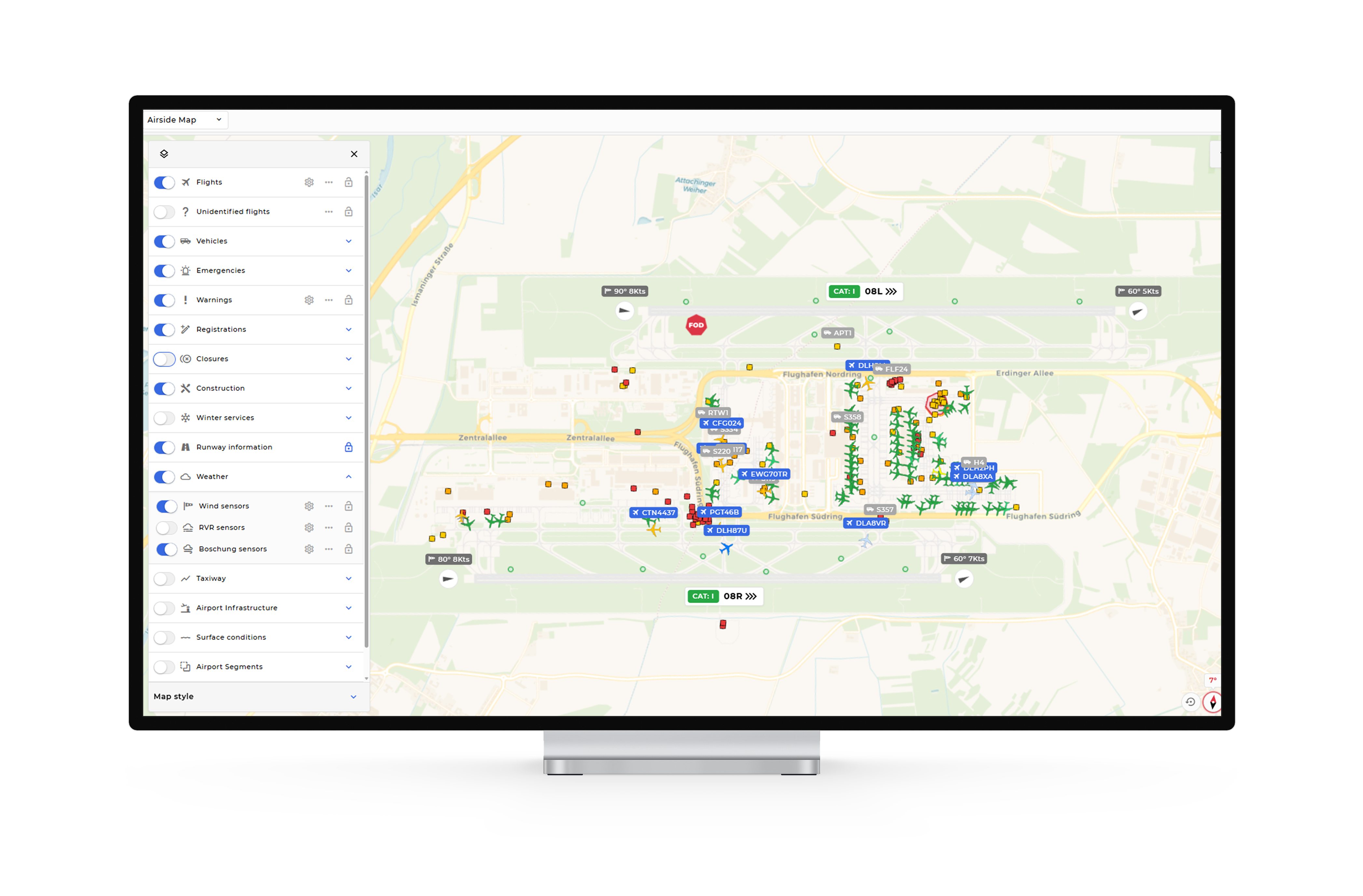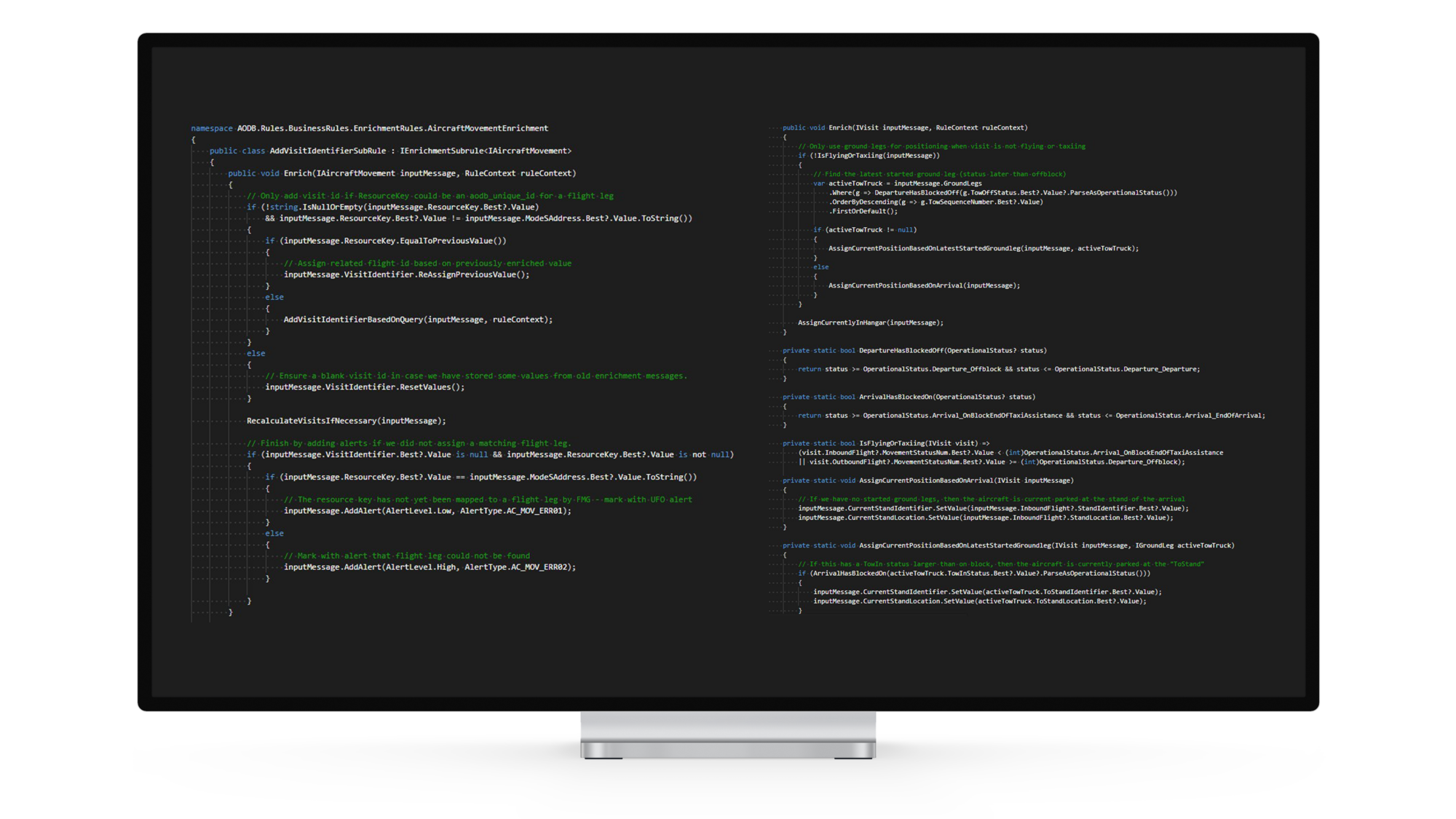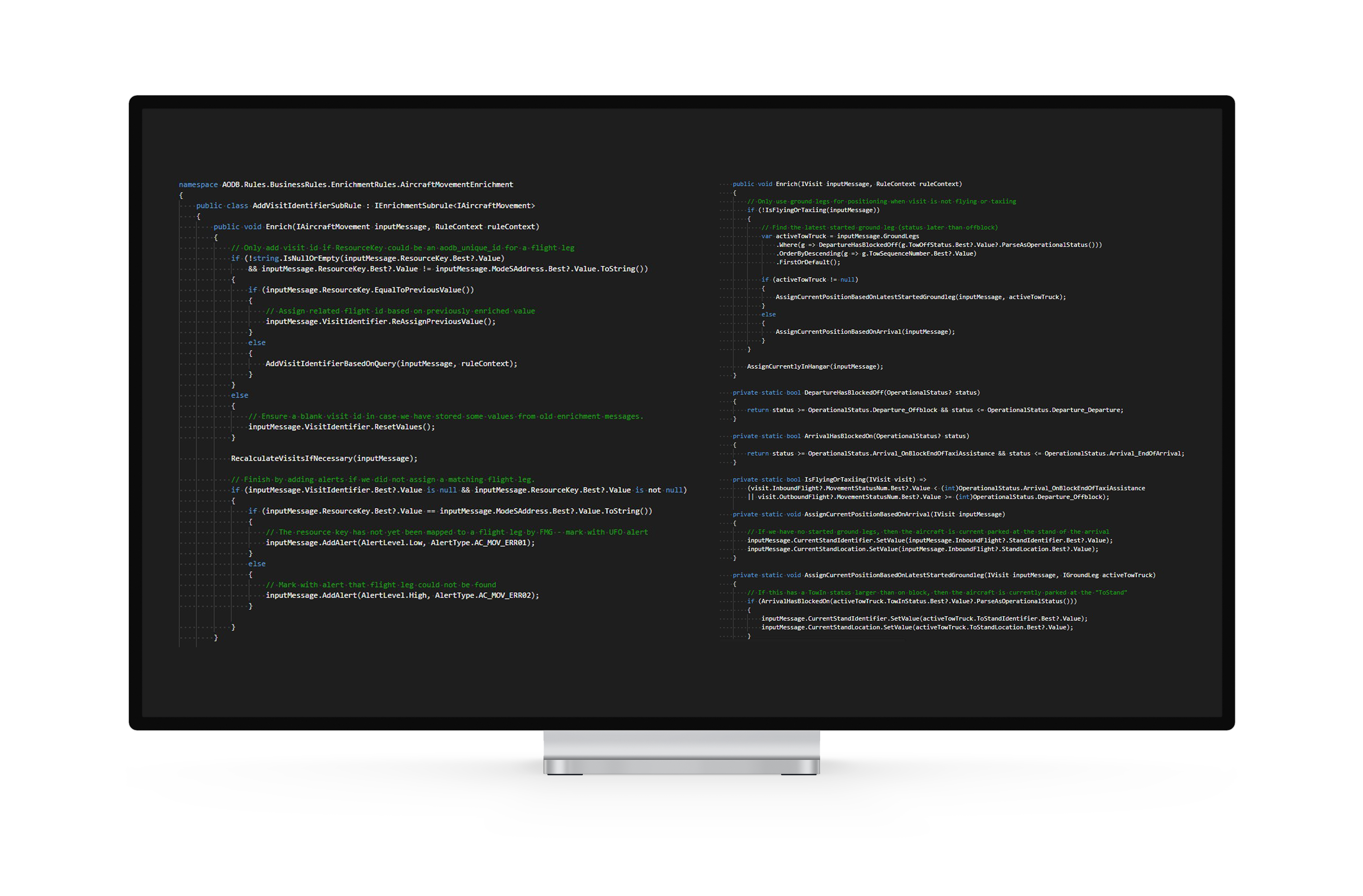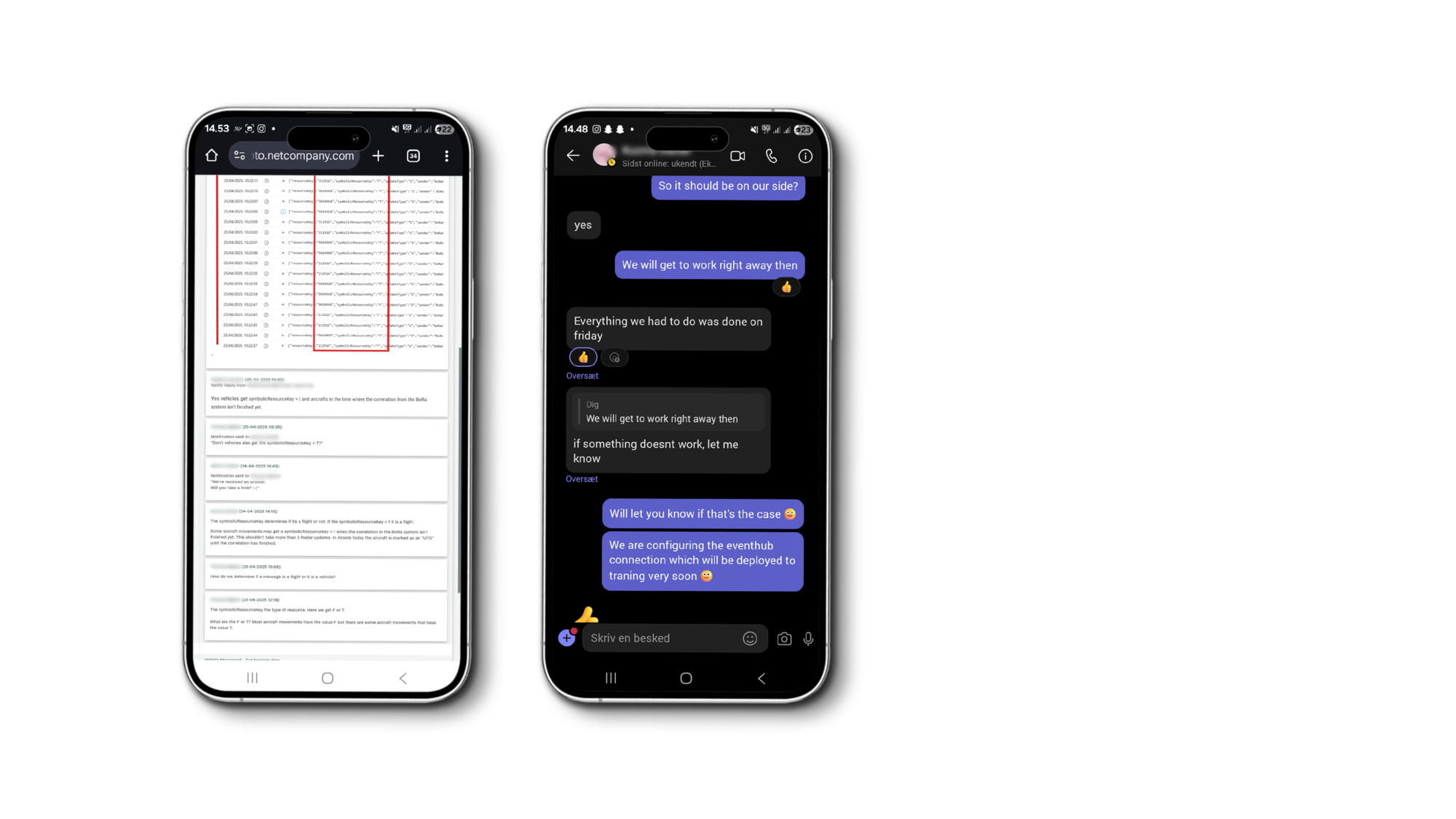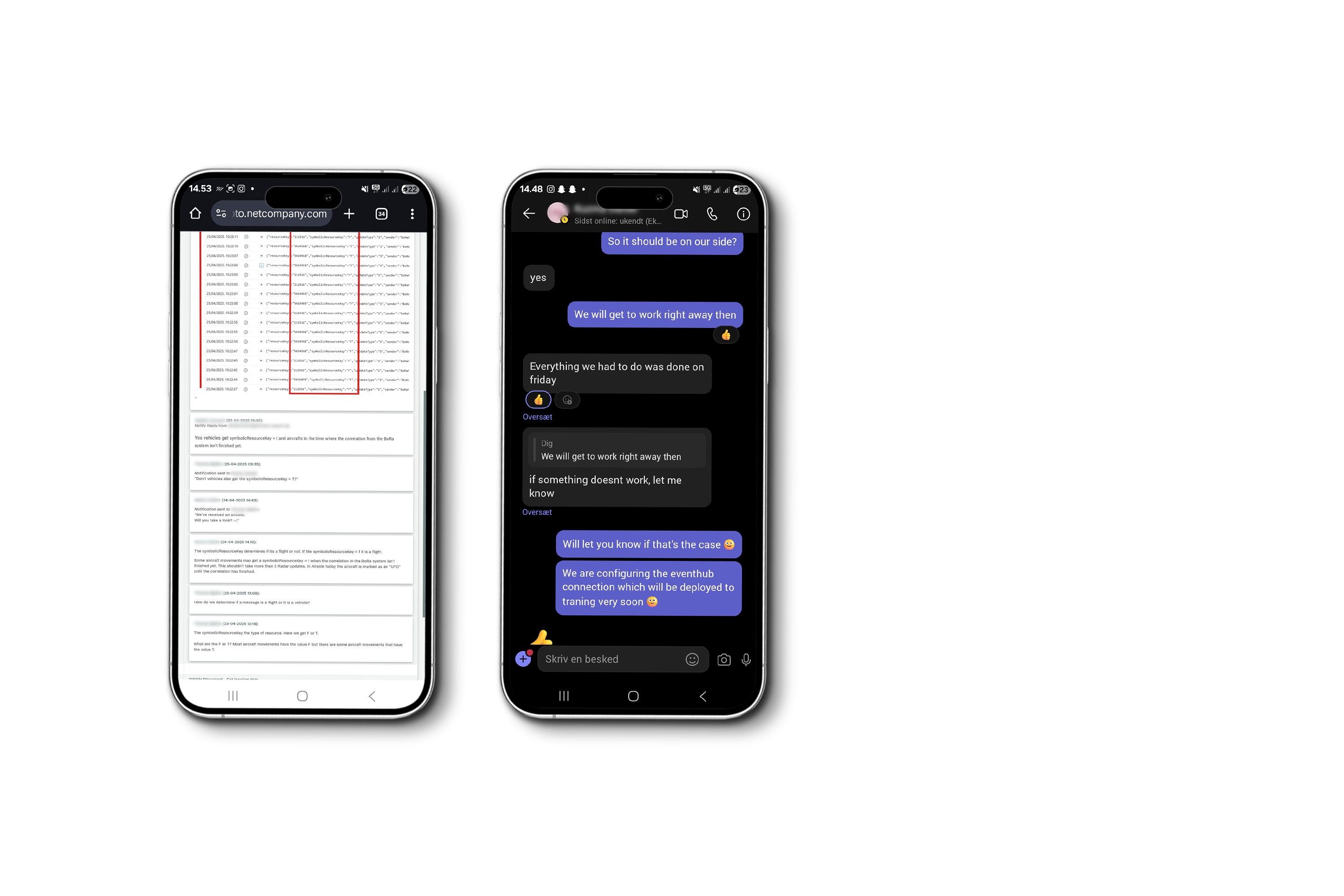AIRSIDE 2.0
At the heart of every system that keeps airports running are the people who make it possible.
Munich Airport is one of Europe’s busiest airports, and behind every departure, thousands of IT systems need to work together. At the heart of these systems are not just technologies, but people – developers, specialists, and domain experts collaborating across locations to build and maintain the digital infrastructure that keeps aircraft moving safely and on time. Together, these teams are modernising the airport’s digital backbone to ensure operations remain future-ready.
A key milestone in this journey is Airside 2.0, a next-generation system that visualises the entire airfield in real time. What seems effortless on screen is the result of skilled teams working closely together, combining technical expertise and collaboration to process vast streams of live data and ensuring that even a single screw on the runway can be traced back to its source.
Let’s go behind the code and meet some of the people behind the solution.
